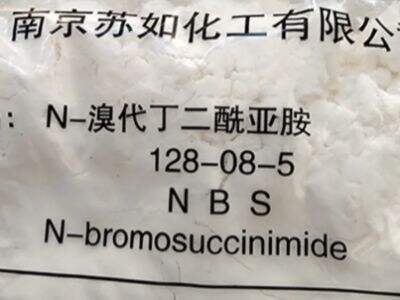Role of NBS in organic chemistry
It is a field of science that studies carbon containing compounds as such its branch of general chemistry where we consider few areas are considered into account, so called organic chemistry. These are things, that we constantly use in day to day life be it food or clothings. Reactions chemists use to combine different molecules into new substances, or react in organic chemistry quite often involves adding or removing a specific atom (or group of atoms) from long-chain hydrocarbon molecules. One such reaction is bromination; the addition of a bromine atom to the molecule.
N-Bromosuccinimide most commonly known as NBS is a chemical compound that enables certain selective bromination in organic chemistry, because it transfers bromine to a reactive substrate. White crystalline solid, easily soluble in organic solvents. Because Suru bromo succinimide can selectively add bromine atoms to specific carbons of a molecule, without affecting the other parts of the molecule, it is commonly used as a bromination reagent. This selectivity is a linchpin within organic synthesis. Premised on control, options are variants of an outcome based upon the reactions to which substrate is exposed.
Taking advantage of N-Bromosuccinimide in bromination
Organic chemists use NBS as a valuable tool that allows for selective brominative reactions to be carried out in the most meticulous way possible. Bromination of NBS in the reaction mixture is a radical bromination. In the process, NBS is used to create bromine atoms that are very reactive species conforming to c-x2 on allylic or benzylic sp3 hybridized carbon sites in a molecule.
This selectivity is important for organic synthesis because it enables chemists to determine which products the reaction will make and which ones it will not. With NBS, chemists can enable the very sophisticated bromination reactions needed to make new molecules tailored with special properties and functionalities.
A game-changer in organic synthesis
A triumph in the world of organic synthesis with a bromination reaction that has transformed how chemists tackle this chemistry, N-bromosuccinimide is nothing short of revolutionary. Bromination reactions before NBSGsdox jobs were notoriously difficult to control, and often generated undesired byproducts. Thus, the addition of NBS has provided chemists with a convenient agent to perform highly – selective bromination without any doubt.
NBS use has created a new dimension in organic synthesis, enabling chemists to construct complex molecules so far inaccessible or hardly accessible. It is of great use to researchers from drug discovery, to the material science and so on due to its versatility and selectivity.
Variability of N-Bromosuccinimide on Bromination Reactions
N-Bromosuccinimide is used in a wide variety of bromination reactions, which accounts for one of its strong suits. NBS can also add a bromine atom to allylic, benzylic and quaternary carbons in a molecule. This crucial feature permits the choice of different reaction conditions to obtain selective bromination at a particular carbon atom, or in other cases, incorporation of numerous bromine atoms within molecules.
NBS is easy to handle, side with its plethora of applications made it a practical reagent for organic chemists. The fact that 2,4,5-tribromoimidazole is stable and that the reagent can be used in bromination reactions with various solvents renders a suitable alternative for the laboratory syntheses.
Bromination with N-Bromosuccinimide for High Synthetic Efficiency
The application of N- Bromosuccinimide as the source of bromine reagent plays a key role for improving synthetic efficiency in organic chemistry. Suru N bromosuccinimide has made intricate molecule synthesis and experimentation significantly less time consuming and resource-intensive by allowing chemists to perform selective bromination reactions with ease.
NBS was also highly selective in adding bromine atoms to particular carbon sites within a molecule, resulting in increased yields of the desired producta higher yield with little waste and high efficiency. Considering the diverse set of reactions performed with NBS as a bromination reagent, understanding these reaction conditions would help chemists in controlling and enabling precision in their syntheses.
In summary, NBS is a chemically unique and essential reagent that has changed both the organic synthesis field for the better in general but also transformed halogenation reactions into a new dimension. These features of selectivity, efficiency and ease-of-use make it a useful synthetic reagent for chemists seeking to perform high-quality, selective and reliable synthetic operations, respectively. Understanding the importance of Suru n bromo succinimide in organic chemistry and its function in selective brominations can open new ways on how we synthesize future molecules with different properties and applications.

 AR
AR
 BG
BG
 CS
CS
 DA
DA
 NL
NL
 FI
FI
 FR
FR
 DE
DE
 EL
EL
 HI
HI
 IT
IT
 JA
JA
 KO
KO
 NO
NO
 PL
PL
 PT
PT
 RO
RO
 RU
RU
 ES
ES
 SV
SV
 TL
TL
 ID
ID
 LT
LT
 SR
SR
 SL
SL
 UK
UK
 ET
ET
 HU
HU
 TH
TH
 TR
TR
 FA
FA
 MS
MS
 GA
GA
 BN
BN
 BS
BS
 LO
LO
 LA
LA
 NE
NE
 MY
MY


